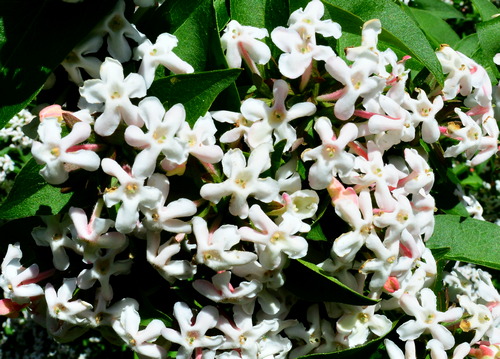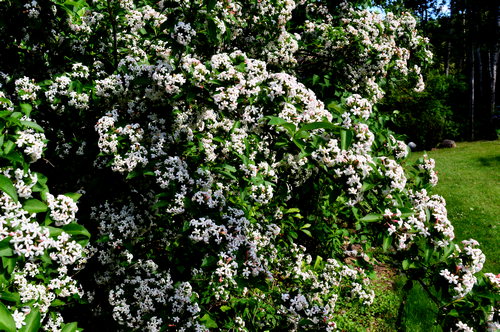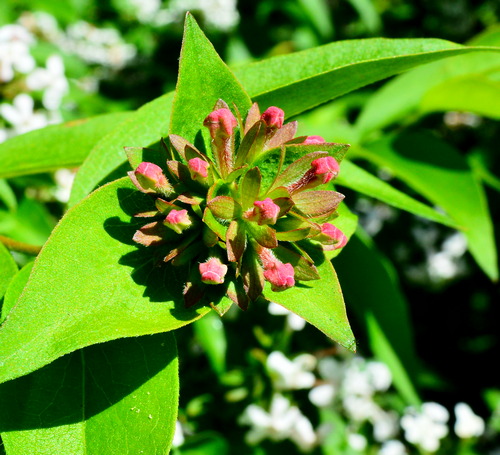Abelia mosanensis is a lovely shrub that few people grow. I am not sure why because it is very easy to grow, flowers well every year and is more fragrant than just about any other shrub in my collection. It does sucker a bit, but is easily controlled. It also forms nice red-orange fall colors.
The name of this plant may be under review. The Plant List still calls it Abelia mosanensis as do most references, but a few now call it Zabelia tyaihyonii. Common names include hardy abelia, fragrant abelia and Korean abelia.
Abelia mosanensis, by Robert Pavlis
The flowers start out as dark pink buds in late spring and slowly open as white flowers. At that point they become butterfly and insect magnets, all jostling for a chance to get some sweet nectar. The sepals have an attractive pink tint and persist long after the flowers fade. Deer and rabbits never bother it. It tolerates part shade and my bush gets sun from morning until about 1:00 pm.
Abelia mosanensis, by Robert Pavlis
It is easy to propagate by removing suckers and it also roots well from cuttings. It blooms on old wood so it should be pruned after flowering.
Video showing how to propagate from suckers: https://youtu.be/uBC1ZRMry0w
Many sources on the internet claim that the Korean abelia is native to L.atvia. Tim Wood, the plant hunter, tells the story about getting some cuttings from a Latvian lady in Germany. Perhaps this shrub was imported to Latvia early on, and has migrated to other places from there, leading people to believe it is native there? It is native to Korea.

Abelia mosanensis
(ah-BEE-lee-uh mo-sahn-EN-sis)
Life Cycle: shrub
Height: 6 m (6-8 ft)
Bloom Time: late spring - early summer
Natural Range: Korea
Habitat: ???
Synonyms: Zabelia tyaihyonii, Abelia tyaihyoni
Cultivation of Abelia mosanensis:
Light: part shade to full sun
Soil: variable
Water: moist to dry
USDA Hardiness Zone: 4- 9
Propagation: seed, division, softwood cuttings



